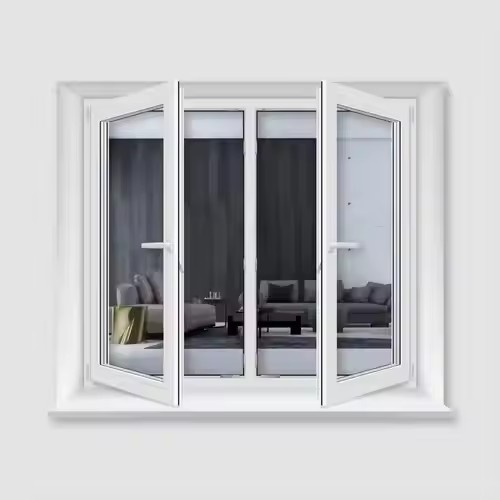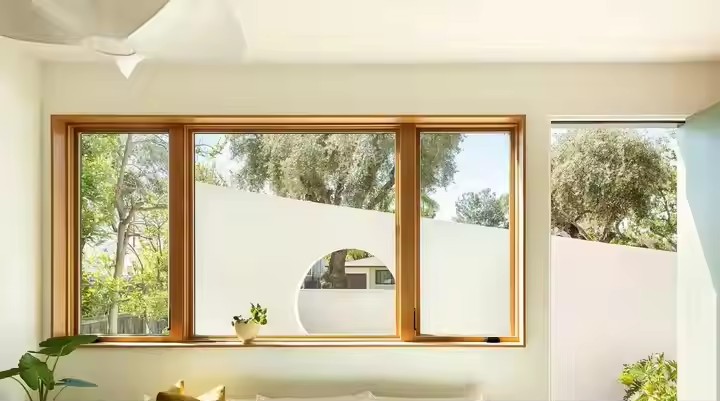- Energy Efficiency and Thermal Insulation Technology
Optimizing Profile Structures: Develop more efficient thermal break aluminum profiles by increasing the number of cavities and optimizing their shapes to enhance insulation. For example, multi-cavity thermal break profiles can effectively block heat transfer. New types of insulating materials can also be explored for profile filling to further reduce thermal conductivity.
Improving Glass Configurations: Promote high-performance glass such as triple-pane, double-cavity Low-E glass, which effectively blocks UV and infrared rays to reduce heat exchange between indoors and outdoors. Additionally, research and develop smart glass that can dynamically adjust light transmittance and insulation performance based on seasonal and weather conditions for better energy savings.
Enhancing Sealing Technology: Improving the sealing performance of doors and windows is key to reducing heat loss. This can be achieved by developing new sealing materials with higher elasticity and durability, like advanced rubber gaskets, and implementing multi-layer sealing structures to effectively prevent air leakage when closed.

- Sound Insulation and Noise Reduction Technology
Optimizing Structural Design: Increase the number of window layers, adopt double or multiple glass layers, and use soundproofing and vibration-damping materials between the window frame and wall to reduce sound transmission. For example, Yihe Windows collaborated with Tsinghua University to develop products with 40dB sound reduction, certified to the highest soundproofing standard.
Using High-Performance Materials: Besides glass, the materials used for profiles and hardware also impact sound insulation. Selecting dense and soundproof profiles like thermal break aluminum, combined with high-quality sound-insulating hardware, can enhance overall performance.
Improving Installation Techniques: Ensure firm installation to minimize gaps that can transmit sound. During installation, apply soundproof sealants and fillers to improve insulation effectiveness.
- Smart Technology Integration
Integrating Smart Control Systems: Incorporate doors and windows into smart home systems to enable remote control, automatic opening/closing, and scheduling via mobile apps or voice commands. This allows users to control window operations and blinds anytime, anywhere.
Installing Sensors: Equip doors and windows with sensors like wind, rain, temperature, and humidity detectors to enable automatic response and adjustment. For instance, windows can close automatically during rain or adjust based on indoor temperature thresholds.
Interconnectivity with Other Smart Devices: Enable doors and windows to interact with other smart devices like HVAC systems, ventilation, and lighting to create an intelligent home environment. For example, when windows are closed, the air conditioning system can automatically switch modes to conserve energy.
- Safety and Protection Technology
Enhancing Wind Pressure Resistance: Develop products with higher wind resistance tailored to regional climates by optimizing profile structures, increasing wall thickness, and strengthening connections. For example, Fuxuan Windows passed tests for resistance to level-17 typhoon winds, utilizing innovative mortise-and-tenon structures.
Improving Anti-Theft Features: Use advanced locks and anti-theft technologies, such as multi-point locking systems and smart security solutions. Strengthen glass safety by adopting bulletproof or anti-theft glass to prevent break-ins.
Adding Safety Devices: Install features like fall-prevention chains and anti-collision devices to ensure user safety, particularly in high-rise buildings.

- Environmental Sustainability Technology
Using Green Materials: Develop and apply recyclable, low-energy, and non-polluting materials such as recycled aluminum, bamboo, and new composites. This reduces reliance on non-renewable resources and minimizes environmental impact.
Optimizing Production Processes: Employ energy-efficient equipment and eco-friendly manufacturing techniques to reduce energy consumption and emissions. For example, using chromium-free purification processes can lower heavy metal pollution. Waste management and recycling rates should also be improved.
Extending Product Lifespan: Enhance the quality and durability of doors and windows to prolong their lifespan, reduce replacement frequency, and minimize resource consumption and environmental impact.

